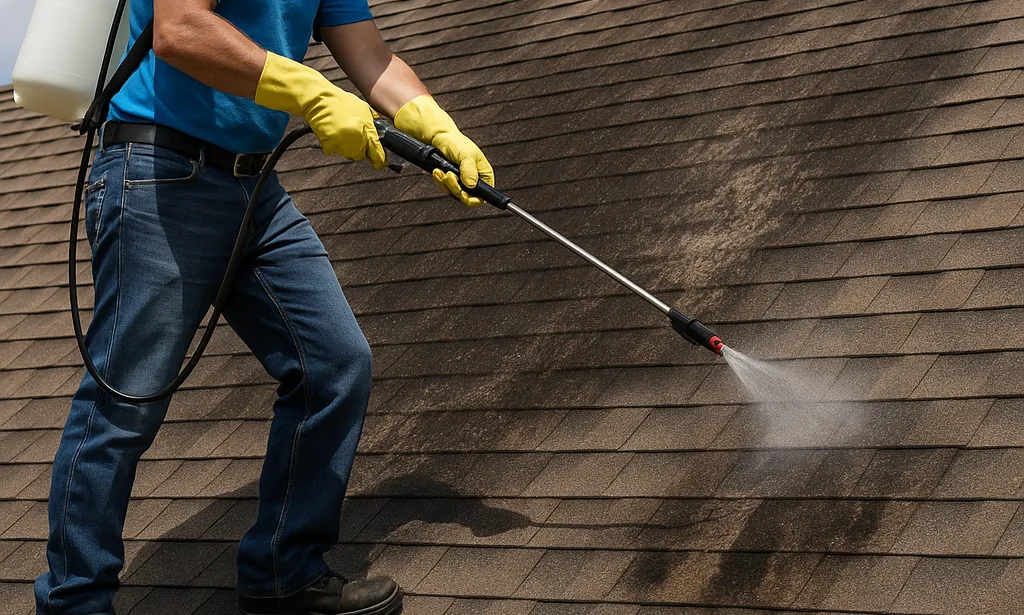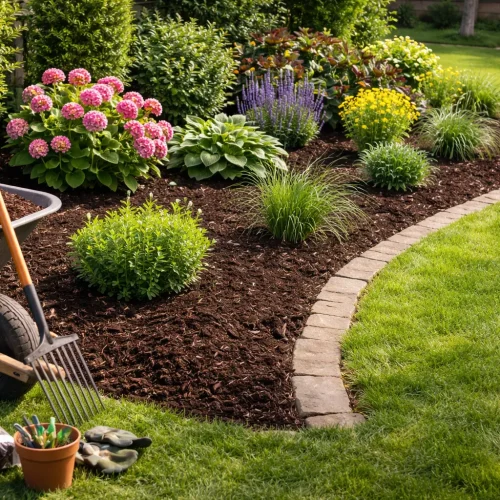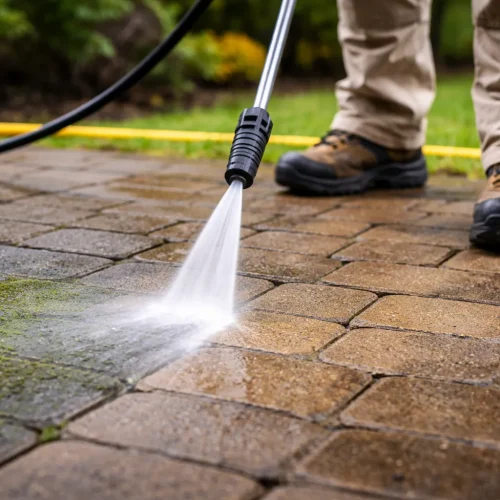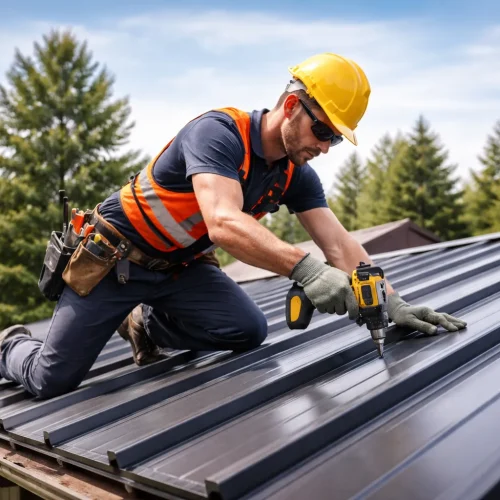
You look up one morning and see it — dark streaks crawling down the shingles. Maybe a patch of moss. Maybe algae blooming across the ridge like mold on old bread. It’s not just an eyesore; it’s a warning. Roof cleaning is one of those chores that most homeowners delay until the stains start shouting. But here’s the catch: clean it the wrong way, and you’ll destroy the very surface you’re trying to protect.
If you’re wondering how to clean your roof without damaging the shingles, stay with me. There’s a right way to do it, a wrong way, and one golden rule—treat your roof gently, not like a driveway.
Why Roof Cleaning Matters More Than You Think
Your roof isn’t just another part of the house—it’s the first line of defense against sun, rain, and heat. But over time, it collects debris, dirt, and biological growths like algae or moss that quietly eat away at its lifespan. Left alone, these organisms retain moisture, lift shingles, and speed up deterioration.
A clean roof does more than look good. It reflects heat better, keeps the attic cooler, and even saves you money on energy bills. The problem is that too many homeowners grab a pressure washer and blast away, thinking power equals clean. That’s how good shingles go bad.
The Risks of Harsh Roof Cleaning
High-pressure cleaning is the number-one roof killer. I’ve seen it too many times — someone rents a pressure washer, cranks it to 2,500 PSI, and by the end of the afternoon, the shingles are stripped bare. The protective granules that help reflect UV rays? Gone. The waterproof barrier? Compromised. And the warranty? Likely voided.
Pressure washing also forces water under flashing and between shingles, setting the stage for leaks and mold. It’s aggressive, fast, and brutally effective—just not in the way you want.
Your roof isn’t concrete. It needs finesse, not force.
What’s Actually on Your Roof (and Why It’s There)
Those black streaks you see? They’re not dirt. They’re bacteria—Gloeocapsa magma—a stubborn organism that feeds on limestone filler in asphalt shingles. Moss, on the other hand, thrives in damp, shaded areas, creeping under shingles and holding moisture against the surface. Then there’s lichen, the crusty mix of algae and fungus that glues itself to the roof like concrete.
Each of these organisms weakens shingles in its own way. Algae stain and heat up the surface, moss lifts and curls shingles, and lichen eats right into them. Knowing the enemy helps you choose the right defense.
And no, blasting them off with high-pressure water isn’t the answer. That’s like removing a splinter with a chainsaw.
Safe Roof Cleaning Methods That Actually Work
Let’s talk strategy. There are several ways to clean a roof safely, and choosing the right one depends on what kind of buildup you’re facing.
- Manual Brushing – For light moss, a soft-bristle brush can gently loosen growth without damaging granules. Always work downward along the roof slope to avoid lifting shingles.
- Low-Pressure Rinse – A garden hose with steady flow—not pressure—is often enough after applying the right cleaner.
- Chemical or Oxygen-Based Cleaners – These break down stains and kill organic matter without friction. Always use formulas labeled “safe for asphalt shingles.”
Each of these methods treats the roof delicately, but one technique stands above them all for its balance of power and precision: soft washing.
The Power of Roof Soft Washing
Here’s the modern answer to safe roof cleaning—roof soft washing. It uses low-pressure pumps (about the force of a garden sprayer) and specialized cleaning solutions to dissolve algae, moss, and grime at the root level. Instead of scraping or blasting, soft washing lets chemistry do the heavy lifting. Think of it like skincare for your roof. Harsh scrubbing only causes irritation; gentle cleansing restores health.
Soft washing doesn’t just wash the surface. It sanitizes it. The detergents penetrate the layers where algae hide and prevent regrowth for months, sometimes years. And because it uses so little pressure, there’s no risk of shingle loss, water intrusion, or structural stress.
It’s the method professionals swear by — and with good reason.
How to Clean Your Roof Safely: A Step-by-Step Guide
If you’re up for a little DIY, here’s how to clean your roof like a pro — minus the damage.
Step 1: Inspect the Roof.
Before anything else, check for loose or damaged shingles. Cleaning won’t fix leaks, and you don’t want to worsen existing cracks.
Step 2: Protect Everything Below.
Plants, windows, and siding can suffer from runoff. Cover them with plastic sheeting and move patio furniture away from the house.
Step 3: Mix or Choose a Roof-Safe Cleaner.
An oxygen-based solution or a pre-mixed soft wash formula works well. Avoid anything with harsh chlorine unless diluted and neutralized properly afterward.
Step 4: Apply Gently.
Use a pump sprayer or soft wash system to apply the cleaner evenly from the top down. Let it dwell for about 15–20 minutes. You’ll see the stains start to fade as the solution works its way in.
Step 5: Rinse Lightly.
Use a garden hose to rinse the roof clean. Don’t rush. Let gravity do the work. For stubborn spots, reapply instead of scrubbing.
Step 6: Stay Grounded (Literally).
Whenever possible, clean from the ladder or hire professionals for steep roofs. The number of ladder-related injuries during DIY roof cleaning is alarmingly high.
After cleaning, you’ll notice a visible difference right away—but the real reward is what you don’t see: a roof that lasts longer and resists future growth.
When to DIY and When to Call the Pros
Here’s the truth: cleaning your roof isn’t rocket science, but it’s not a Sunday project either. If your roof has steep slopes, multiple stories, or heavy moss buildup, call professionals. They have the tools, harnesses, and experience to do it safely.
Professional roof cleaners typically use soft wash systems calibrated to protect your shingles while achieving a spotless finish. Expect to pay between $300 and $700 depending on roof size, accessibility, and buildup severity. That might sound steep—but compare it to the cost of a $10,000 roof replacement, and the math suddenly works in your favor.
Pro Tips for Keeping Your Roof Clean Longer
- Trim Overhanging Branches. Shade and falling debris encourage moss growth.
- Clean Gutters Regularly. Clogged gutters back up water, which seeps under shingles.
- Install Zinc or Copper Strips. Rainwater running over these metals naturally kills algae before it spreads.
- Check Attic Ventilation. Proper airflow helps prevent moisture accumulation that feeds mold and moss.
- Schedule Maintenance Every 2–3 Years. Especially in humid climates where algae thrive.
These small preventive steps extend the life of your shingles and save you thousands in long-term repairs.
Eco-Friendly and Home-Safe Practices
Harsh chemicals can clean fast—but they can also kill grass, plants, and aquatic life. Choose biodegradable cleaners that break down naturally after rinsing. If you hire professionals, confirm they collect runoff or use containment systems.
Another small but powerful move: clean when the weather’s mild. Early morning or late afternoon is ideal. Hot sun can dry cleaners too quickly and reduce their effectiveness. Windy days? Skip them entirely. You’ll just end up misting your neighbor’s car.
Soft washing methods also shine here because they use lower volumes of cleaner and far less water overall, making them both effective and eco-conscious.
Common Mistakes to Avoid
- Using High Pressure: Even a “light” pressure setting can tear granules off asphalt shingles.
- Skipping Rinse: Cleaning solutions left on too long can discolor or weaken roofing materials.
- Walking on Wet Roofs: Besides the obvious safety hazard, footprints can smear cleaning agents and cause uneven results.
- Overuse of Bleach: It kills algae but also eats metal flashing and dries out shingles.
- Ignoring Moss Roots: Moss removed without killing its root structure will regrow in weeks.
Remember — roof cleaning isn’t about instant gratification. It’s about preserving the system that protects your home.
How Clean Roofs Improve Home Performance
A clean roof doesn’t just look fresh. It performs better. Algae and dirt absorb heat, which makes your air conditioner work harder. By keeping your roof reflective, you can reduce attic temperatures and lower cooling costs during hot months. In humid areas, removing moisture-holding moss also prevents structural rot and improves indoor humidity control.
If your home relies on solar panels, keeping the roof clean ensures maximum energy capture. Dust, grime, and organic buildup can reduce solar efficiency by up to 20%. So in a very real sense, clean shingles equal clean energy.
Long-Term Benefits of Gentle Roof Cleaning
Let’s recap the payoff:
- Extended roof lifespan (up to a decade longer with routine soft washing)
- Lower energy costs through better reflectivity
- Improved home value and curb appeal
- Reduced maintenance and fewer repairs
- Peace of mind knowing your roof’s structure remains intact
When you think of roof cleaning as routine care rather than damage control, it becomes part of your home’s wellness plan—not a crisis response.
Conclusion: Clean Smart, Not Hard
Roof cleaning is more than just a cosmetic fix; it’s an investment in your home’s future. The goal isn’t to make your roof look new. It’s to help it age well.
Skip the pressure washer. Skip the shortcuts. A little patience, the right cleaner, and a gentle touch go a long way. Whether you take the DIY route or hire professionals, the key is always the same—protect the shingles first.
So next time those black streaks appear, don’t panic. Don’t grab the pressure wand. Reach for the hose, the sprayer, and the right technique.
Clean smart. Clean safe. And let your roof breathe easy for years to come.
FAQs
Most roofs benefit from cleaning every 2–3 years, depending on climate and shade conditions.
No. High pressure can strip protective granules and cause leaks—use low-pressure methods instead.
Soft washing is the safest method, combining low pressure and cleaning agents that kill algae at the root.
Yes, but only if it’s a low-slope roof and you use roof-safe cleaners with gentle rinsing.
They’re caused by algae called Gloeocapsa magma that feed on the limestone in shingles.
Trim nearby trees, improve ventilation, and install copper or zinc strips to deter growth.
Absolutely. Regular cleaning prevents decay, preserves shingles, and can add years to your roof’s lifespan.












